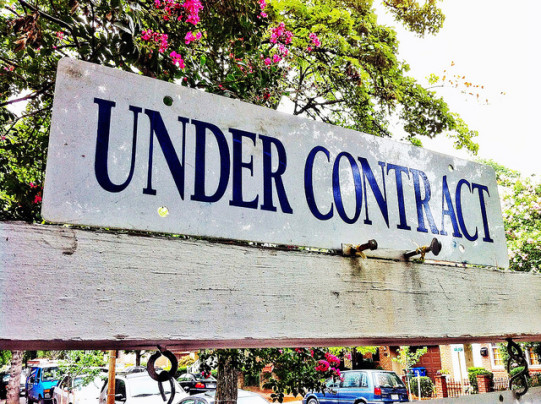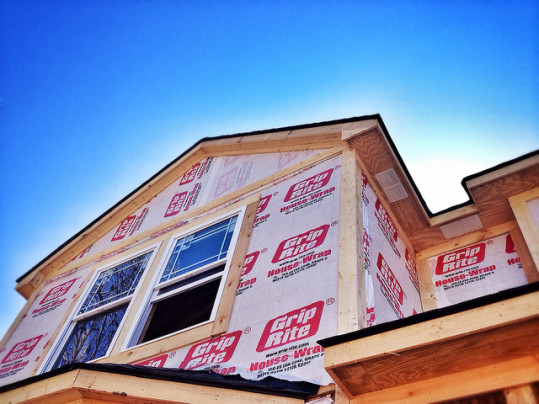According to Freddie Mac’s Multi-Indicator Market Index, local housing markets across the country are stronger than they’ve been in years. In fact, the index – which tracks home purchase application data, payment-to-income ratios, proportion of on-time mortgage payments, and the local employment picture in all 50 states – is higher than it’s been at any time since 2008. “Housing markets are the strongest they’ve been in years with the National MiMi above 80 for the first time since 2008,” Freddie Mac’s deputy chief economist, Len Kiefer, said. “Nationally, all MiMi indicators are heading in the right direction. Robust homebuyer demand has put total home sales on pace for the best year since 2007 and look for that trend to continue as the MiMi purchase applications indicator remains on the upswing.” According to Kiefer, the West has been particularly strong lately, with many markets posting double-digit growth in purchase applications compared to last year. This month’s results show 28 of 50 states and 42 of the top 100 metros have returned to their long-term stable range. More here.
Archive for August 2015
Pending Home Sales Rise Again In July
The National Association of Realtors’ Pending Home Sales Index is a measure of how many contracts to buy homes were signed during the month. Since the index gauges signings, not closings, it’s a good indicator of upcoming sales of previously owned homes. In July, the index inched up 0.5 percent from the previous month. The index has now risen over year-before levels for 11 consecutive months and is 7.4 percent above last year. Lawrence Yun, NAR’s chief economist, says the housing market began the second half of the year on a positive note. “Led by a solid gain in the Northeast, contract activity in most of the country held steady last month, which bodes well for existing-sales to maintain their recent elevated pace to close out the summer,” Yun said. “While demand and sales continue to be stronger than earlier this year, Realtors have reported since the spring that available listings in affordable price ranges remain elusive for some buyers trying to reach the market and are likely holding back sales from being more robust.” Regionally, pending sales were up 4 percent in the Northeast, 0.6 percent in the South, and flat in the Midwest. The West saw a slight decline from last month. More here.
Demand For Home Purchase Loans Increases
According to the Mortgage Bankers Association’s Weekly Applications Survey, the number of potential home buyers seeking a loan to purchase a home rose 2 percent last week from the week before. The increase was driven by a 5.6 percent jump in the number of buyers applying for loans backed by the Federal Housing Administration. Government home purchase loans have lower down payment requirements and are typically popular among first-time home buyers, who have less savings and a more difficult time coming up with a down payment. The overall boost in buyer demand came during a week when mortgage rates were mostly down. In fact, rates fell on 30-year fixed-rate loans with both conforming and jumbo balances, in addition to 15-year fixed-rate loans. Mortgage rates on FHA loans rose slightly. Mike Fratantoni, MBA’s chief economist, said recent stock market volatility hasn’t yet affected results. “The turmoil in global stock markets and subsequent drop in interest rates that began late last week is not evident in these results, but will likely have a significant impact on next week’s results.” Fratantoni told CNBC. The MBA’s weekly survey has been conducted since 1990 and covers 75 percent of all retail residential mortgage applications. More here.
New Home Sales 26% Higher Than Last Year
New estimates released by the U.S. Census Bureau and the Department of Housing and Urban Development show that, following a 5.4 percent increase in July, sales of newly built single-family homes are now 25.8 percent above where they were one year ago. The improvement represents a significant rebound from June’s estimate, when sales unexpectedly fell nearly 7 percent. Regionally, sales were led by a 23.1 percent surge in the Northeast and also saw strong gains in the West and South. The Midwest, on the other hand, saw a 6.9 percent decline. Also in the report, the number of new homes for sale increased nearly 2 percent last month and is now at its highest level since 2010. Though, inventory still remains low compared to where it was during the height of the housing boom, recent data shows new houses are being built at the fastest pace since 2007, indicating that the positive momentum should continue. That’s good news for potential home buyers, as a growing number of homes available for sale helps moderate price increases and preserves favorable affordability conditions. More here.
Housing Forecast Finds Growth Amid Concerns
Economic growth was weaker than expected during the second quarter of the year, according to a new statement from Fannie Mae’s Economic & Strategic Research Group. But despite disappointing second quarter economic activity, the group hasn’t changed its outlook for the housing market this year. In fact, there are plenty of positive signs to be found. Fannie Mae’s chief economist, Doug Duncan, points to the fact that job creation remains steady and full-time employment is getting closer to pre-recession numbers. Household net worth also continues to rise, though income growth could use more improvement. “We hold by our previous comments that income growth still needs to strengthen, particularly for younger households, in order to drive significant housing growth, but we are nonetheless seeing some positive improvements in the housing sector,” Duncan said. “Home sales have trended up and inventories are lean, supporting strong home price appreciation. That price growth, driven by laggard supply response, helps build equity for existing owners but is a headwind for first-time buyers.” Still, Fannie Mae expects mortgage rates to rise only gradually through the next year, which should help keep buying affordable despite steady price gains. More here.
Home Sales Increase For 3rd Straight Month
Sales of previously owned homes rose two percent in July, according to the National Association of Realtors. The increase marked the third consecutive monthly gain and put sales 10.3 percent above year-before levels. Lawrence Yun, NAR’s chief economist, said there has been an impressive growth in sales during this year’s peak buying season. “The creation of jobs added at a steady clip and the prospect of higher mortgage rates and home prices down the road is encouraging more households to buy now,” Yun said. “As a result, current homeowners are using their increasing housing equity towards the down payment on their next purchase.” The encouraging report wasn’t all good news, however. For example, the number of homes available for sale remains low and, when inventory is low, home prices begin to rise at a faster pace. In July, prices were 5.6 percent higher than one year ago and increased year-over-year for the 41st consecutive month. But despite low inventory and steady price gains, homeownership remains an affordable choice due to low mortgage rates and ever-increasing rents. Also in the report, the typical home for sale stayed on the market for 42 days, up from 34 days in June. More here.
Mortgage Demand Rises As Rates Drop
According to the Mortgage Bankers Association’s Weekly Applications Survey, average mortgage rates dropped to 3-month lows last week. Rates were down across all loan categories, including 30-year fixed-rate mortgages with both conforming and jumbo balances, loans backed by the Federal Housing Administration, and 15-year fixed-rate loans. “Concerns about the Chinese economy pushed interest rates down last week, resulting in a two basis point decline in 30-year fixed interest rates, bringing the rate down to its lowest since May 2015,” Lynn Fisher, MBA’s vice president of research and economics, said. “The pick-up in refinance activity was led by larger loan sizes on average, as continued investor interest drove jumbo interest rates down even further, by five basis points.” In fact, refinance activity jumped 7 percent from the previous week and, as a share of total mortgage demand, rose to 55.5 percent. On the other hand, purchase demand was down 3 percent from the week before. Still, purchase application demand – which is a good indicator of future home sales – was 19 percent higher than the same week one year ago. The MBA’s survey has been conducted weekly since 1990 and covers 75 percent of all retail residential mortgage applications. More here.







